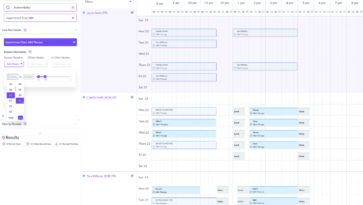
Patients today are more empowered than ever before, and their options for receiving quality care continue to expand. As a result, healthcare providers are forced to compete for patients’ business.
The patient experience is beginning to drive healthcare providers’ overall strategy, and forward-thinking providers are beginning to invest in developing a patient-centric user experience — something largely unforeseen in the healthcare sector until now.
Increasingly, it’s patient portals that are considered a key component of that experience, which explains why the patient portal market is expected to grow to $900 million this year.
In theory, a number of benefits to both patients and providers come with the successful implementation of a patient portal. For patients, they can provide a secure outlet to engage with caregivers without having to pick up the phone or visit the care facility, ultimately letting them take more active roles in their own healthcare.
For providers, portals represent a secure and more cost-effective means of communicating with patients, one that reduces the need for phone calls or visits. Portals that enable a painless (or even positive) experience can drive patient loyalty and, even more important, help providers facilitate relationships with patients who might otherwise remain largely anonymous. By giving patients access to their health data and educational resources via portals, providers can build trust with patients and ultimately deliver better care during appointments. It’s a win-win for patients and providers.
The purchasing problem
In practice, portals still have some room to grow: Every healthcare organization is different, and portals don’t always reflect those nuances.
Many providers attempt to capture the perceived benefits that come with implementing a patient portal without investing in building that solution themselves. Instead, they’ll rely on vendors to build it for them.
The problem is that most widely used vendors are still notorious for underdelivering in terms of the quality of the solution they provide — from user interface and design to security — and the support and training services they offer.
And when the facility using the patient portal isn’t fully committed to a portal (as is often the case with generic portals), the user experience inevitably suffers. An intuitive user experience is crucial, especially considering that it’s challenging enough to get patients to use portals in the first place. A survey conducted by HealthMine found that only 20 percent of patients rely on portals to make shared decisions about their health, and among older patients who tend to be less computer-savvy, that number drops even lower. Patients who are generally healthy typically have little incentive to use portals and are often too busy to check them anyway.
Low-quality solutions will further deter both doctors and patients from using the portal and turn it into a barrier rather than an engagement tool.
Unlocking customization
Every healthcare facility serves patients with unique needs, which is why investing in a customized solution is usually the most logical option. Even so, many of the customized solutions offered by prescient providers face the same roadblocks to adoption — like poor user experience — as purchased solutions. That helps explain why healthcare executives, administrators, and practitioners still perceive patient portals as relatively ineffective compared with other engagement tools.
But a well-designed portal can be the centerpiece of unique patient experience and can serve as a key differentiator for healthcare organizations, simultaneously providing a multitude of benefits. To realize these advantages, healthcare decision makers should ask themselves the following questions when developing a custom patient portal:
1. How easy is this to use? If your portal is only going to confuse staff or patients, resulting in more visits and calls to the front desk, it’s not a worthwhile investment. Alpa Vyas, Stanford Health Care’s VP for patient experience, recommends adopting design thinking principles to gain an understanding of the healthcare experience from a patient’s perspective. As an organization, you should make technology decisions primarily on the basis of your patients’ specific needs. This means you should be taking into account relevant demographic and behavioral information when deciding whether to implement a portal.
Another facet to consider is what features to include. A patient portal offering endless features is useless if your patients don’t even know how to access it or will use the portal for only one or two tasks. Similarly, a more robust patient portal will likely require a more comprehensive training program for patients and staff.
2. Is everyone committed to using this? Again, you need organization-wide buy-in to implement a patient portal effectively. This means deciding up front whether you’re creating the portal for the sake of creating a portal, or whether you’re building it to truly deliver an amazing patient experience.
If it’s the latter, you’ll have to commit to rethinking the entire design of your systems and current workflows. Asking other practitioners what tools they need in a portal — and how they would use the technology if it worked perfectly — can give you a good starting point.
3. What are the costs? Compare the time and financial investment required to build a custom tool to the direct and indirect costs of purchasing a solution, which could include installation, licensing and maintenance fees, and transaction fees, among others. You’ll also have to think about the time and resources it will take to train staff and patients to use the new technology — keeping in mind that a HIPAA-compliant patient portal requires additional training up front — and decide how much lost productivity you’re willing to accept during the transition phase.
Finally, pinpoint the cost savings you hope to achieve, and map out how long it will take to realize those savings.
A truly effective patient portal isn’t a quick fix, and healthcare executives should look beyond its immediate and direct impact on the bottom line. We are on the cusp of a long-awaited transformation of the entire patient experience.
As more organizations deliver better experiences, patient expectations will steadily rise. Organizations investing in solutions that meet and surpass those expectations now will be the ones that survive the transformation and lead the industry into the years to come.
Kevin Yamazaki is the founder and CEO of Sidebench, a leading digital product and venture studio that creates custom software and apps for clients across healthcare, finance, entertainment, and consumer product industries. As a passionate solutions architect and product designer, Kevin is driven to create. Because of his unique innovations, Sidebench has a growing reputation for solving its clients’ largest unique challenges through custom integrations, internal tools, and consumer-facing applications. Forbes listed Kevin in its 30 Under 30 Class of 2017.







